HULK Metal will continuously update the dynamics of the metal products industry, to support your decision-making.

Hulk Metal News
Share what's new
Cable grip VS Wire Grip Comprehensive Detailed Analysis

Cable grip and wire grip are two important tools widely used in the optical communication and power industry. Although they differ in function and structure, they both play a key role in their respective application fields. This article will introduce in detail the definition, use, structure, performance, design, and importance of these two types of grips in modern communication and power engineering.
Definition
Cable Grip:
A cable grip is a special tool used in the construction and maintenance of optical fiber networks. Its main function is to insert the optical fiber into the optical port of the connector or cross-wiring frame during the installation and connection of the optical fiber, so as to achieve a fast and reliable connection of the optical cable. Cable grip is widely used in the field of optical fiber communication, usually used to connect the optical fiber to the device port to ensure the stability and efficiency of signal transmission.
Wire Grip:
Wire grip is a clamp tool specially used for cable installation, which is used to speed up the cable connection process and improve the installation quality. It is commonly used in power engineering, construction, and industrial fields to ensure the safe and firm connection of various wires. In the process of power and signal transmission, the wire clamp plays a vital supporting role by fixing and clamping the cable.
Uses
The optical cable grip and the wire grip each play an important role in different application scenarios.
Uses of the optical cable grip:
The optical cable grip is mainly used in the optical cable communication industry. Optical cable communication is one of the core technologies of modern information transmission. It relies on optical cables to achieve large-capacity and high-speed data transmission. The optical cable grip plays an important role in connecting and fixing optical fibers during the installation and maintenance of optical fiber networks. The optical cable grip can be used in a variety of occasions, including but not limited to fiber-to-the-home (FTTH) installation, optical fiber network fault repair, equipment testing, etc. By using the optical cable grip, the connection speed and reliability of the optical cable can be effectively improved, thereby ensuring the stability and efficiency of the optical communication network.
Uses of the wire grip:
The wire grip is mostly used in industrial fields such as power and construction. They are commonly used in the erection of power transmission lines, the wiring of building cables, and the installation and maintenance of industrial equipment. During the power transmission process, wire grips are used to connect and fix various wires to ensure that they are not affected by external forces and fall off or damaged. In construction and industrial applications, wire grips can improve the efficiency of cable wiring, reduce the time and cost of power installation, and improve the overall quality and safety of the project.
Structure
Optical cable grips and wire grips have their own characteristics in structural design to adapt to their different application scenarios and needs.
Structure of optical cable clamps
Optical cable grips usually consist of inserts, clamps, connection bases, and other parts. The insert is the part where the optical fiber is connected to the optical port, and the physical connection is achieved by inserting it into the optical port. The clamp part is responsible for fixing the optical fiber to prevent it from loosening or shifting during the connection process. The connection base provides stability and installation convenience for the entire clamp. In addition, the design of the optical cable clamp also needs to consider the optimization of optical performance, such as reducing insertion loss and reflection loss to ensure the stability of optical signal transmission.
The identification letters of the optical cable grip are usually SC, FC, LC, etc., which represent different types of connectors.
·SC (Subscriber Connector) is a square plug-in connector with good anti-interference performance.
·FC (Ferrule Connector) is a metal circular plug-in connector suitable for high-vibration environments.
·LC (Lucent Connector) is a small plug-in connector widely used in high-density wiring environments.
Structure of the wire grip:
The wire grip is generally composed of wire grips, metal frames, screws, and other components. The wire clamp is used to fix the wire, the metal frame provides structural strength and stability, and the screw part is used to adjust the clamping force and install and fix. The design focus of the wire grip is on the optimization of electrical performance, such as minimizing resistance and good conductivity of the contact surface.
The identification letters of the wire grip are usually V, W, R, P, etc., which correspond to different structural forms and application scenarios.
·V-type grips are suitable for vertically suspended cables.
·W-type grips are mostly used for horizontal wiring.
·R-type and P-type are suitable for various special installation requirements.
Performance
Optical cable grips and wire grips also have different focuses on performance requirements.
Performance of optical cable grips:
Optical cable grips focus on optical performance. Its key parameters include insertion loss and reflection loss. Insertion loss refers to the amount of loss introduced by the optical fiber connector in the optical path. The lower the insertion loss, the higher the signal transmission quality. Reflection loss measures the ability of the connector to reflect the signal. The higher the reflection loss, the smaller the impact of signal reflection. Therefore, the size and material of the optical cable grip need to be precisely controlled during the design and manufacturing process to ensure the best state of its optical performance.
In practical applications, the performance of optical cable grips also involves durability and resistance to environmental influences. For example, in outdoor optical fiber network deployment, optical cable grips must be waterproof, dustproof, UV resistant, and other characteristics to ensure long-term stable operation. The material of optical cable grips is usually alloy steel to improve its corrosion resistance and mechanical strength.
Performance of wire clamps:
The performance of wire grips is mainly focused on electrical performance, including conductivity, tensile strength, and corrosion resistance. Conductivity is one of the most important properties of the wire grip. It is necessary to ensure that the contact resistance after the cable is connected is low to reduce the energy loss during power transmission. The tensile strength determines the ability of the wire grip to withstand external forces during use, especially when the cable tension is large. The tensile strength directly affects the safety and reliability of the clamp.
The material selection of the wire grip is usually high-strength alloy steel to ensure excellent conductivity. At the same time, in a highly corrosive environment, the surface of the wire grip needs to be specially treated, such as galvanizing, thinning, or using anti-corrosion materials to improve its durability and safety.
Design
Material: High-strength alloy steel forging
The wire rope grip is forged with high-quality high-strength alloy steel, which has excellent tensile strength and wear resistance. The selection of alloy steel not only improves the overall strength of the product but also gives it excellent corrosion resistance and durability. After precise forging process processing, our wire grips have better impact resistance and toughness while maintaining high strength, and can effectively resist various complex working environments and harsh climatic conditions.
Heat treatment: special process, strong and durable
Our wire rope grips undergo a special heat treatment process, including quenching and tempering, to enhance their hardness and toughness. Through this process, the internal structure of the clamp is optimized, significantly improving its tensile strength and fatigue resistance, thereby extending its service life. This high level of heat treatment technology ensures that the clamp still performs well under high load conditions, is not easy to deform or damage, and can operate stably for a long time.
Jaw design: anti-jump wire safety device
Our wire rope grips are equipped with advanced anti-jump wire safety devices, which effectively prevent the risk of slipping or breaking of wire grips during use. The grip jaws are precisely machined and surface-treated to firmly grasp the wire rope, providing excellent grip and stability. The anti-shatter design also reduces damage to the outer surface of the wire rope, ensuring the safety and integrity of the wire rope. This design ensures a safe and reliable grip in a variety of high-load and high-strength applications.
Applicable wire diameter: Wide compatibility, wide range of applications
Our wire rope grips are suitable for wire ropes with a wire diameter range of 2 mm to 45.7 mm, with a wide range of applications. Whether it is for small-diameter wire ropes or large-diameter heavy wire ropes, our grips can provide reliable performance and stable gripping force to meet the needs of various engineering projects. The adaptability of multiple wire diameters makes this product widely used in various industries, including construction, transportation, hoisting, and other fields.
Maximum load: up to 10 tons, meeting various high-strength requirements
Our wire rope grips can withstand a maximum load of up to 10 tons and are suitable for various heavy lifting and handling operations. Whether it is the lifting of heavy equipment in industrial production or the transportation of structural components in construction projects, our grips can do the job. Its high load capacity ensures stability and safety under extreme conditions, further improving work efficiency and safety.
Customized service: meet special needs
In addition to standardized wire rope grip products, we also provide customized services, designing and manufacturing according to the special needs of customers. Whether it is the selection of special materials or specific size, shape, or load requirements, our professional team can provide you with the most optimized solution.
Application advantages of optical cable grips and wire grips
Application advantages of optical cable grips:
Quick connection:
Optical cable grips can achieve fast and efficient optical fiber connection, greatly shortening the construction time.
High stability:
The use of optical cable grips can ensure the stability and reliability of optical fiber connections and reduce the loss and reflection during signal transmission.
Easy maintenance:
The optical cable grip is compact in design, easy to operate and maintain, and is particularly suitable for optical fiber networks that require frequent inspection and maintenance.
Adapt to a variety of environments:
Optical cable grips can adapt to various complex environmental conditions, including high humidity, high temperature, low temperature, etc., to ensure stable operation in various environments.
Application advantages of wire grips:
Improve efficiency:
Wire grips can speed up the speed of cable connection, improve installation efficiency, and reduce construction costs.
Safe and reliable:
Wire grips provide strong mechanical clamping force and electrical connection stability to ensure safe and reliable connection of cables.
Versatility:
Wire grips can be used for a variety of cable types and specifications, and have a wide range of applicability.
Durability:
Wire grips are made of strong, corrosion-resistant materials, suitable for various harsh environments, and ensure long-term stable operation.
Fiber optic cable grips and wire grips play an indispensable role in optical communications and power engineering. Their design and manufacturing processes are carefully considered to ensure efficient and stable performance in their respective fields. As a professional wire cable grip manufacturer, HULK Metal has always been committed to providing customers with high-quality, high-performance products, while providing flexible customized services to meet the special needs of different industries and applications. We look forward to contributing to the development of modern communications and power engineering through continuous technological innovation and quality services.
Article Navigation
Article Navigation
Industries
Forging Factory
-
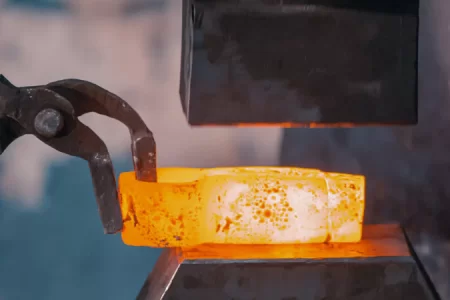 012024.07Difference between hot forging and cold forging
012024.07Difference between hot forging and cold forging -
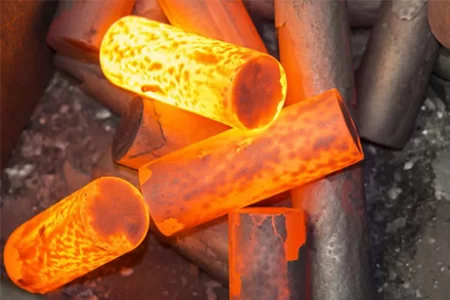 272024.06What are the advantages and disadvantages of the hot forging process?
272024.06What are the advantages and disadvantages of the hot forging process? -
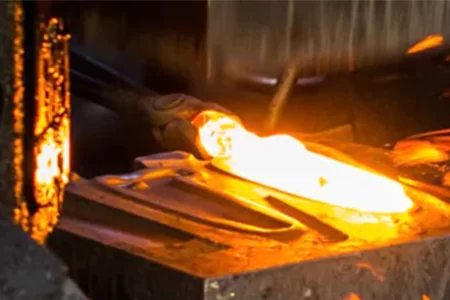 182024.01Forging: What Is It? What Are The Different Types of Hot Forging?
182024.01Forging: What Is It? What Are The Different Types of Hot Forging? -
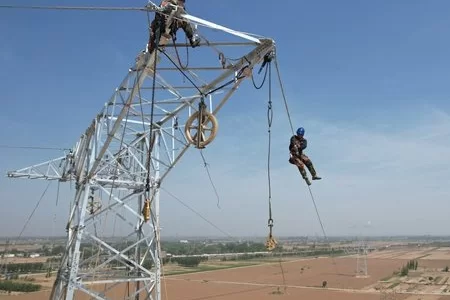 252024.07How to Choose the Perfect Cable Grips for Your Needs?
252024.07How to Choose the Perfect Cable Grips for Your Needs? -
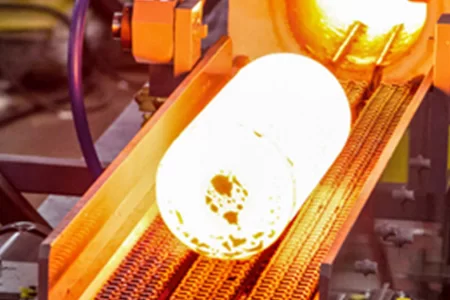 032024.07What are the processes of hot forging?
032024.07What are the processes of hot forging?


